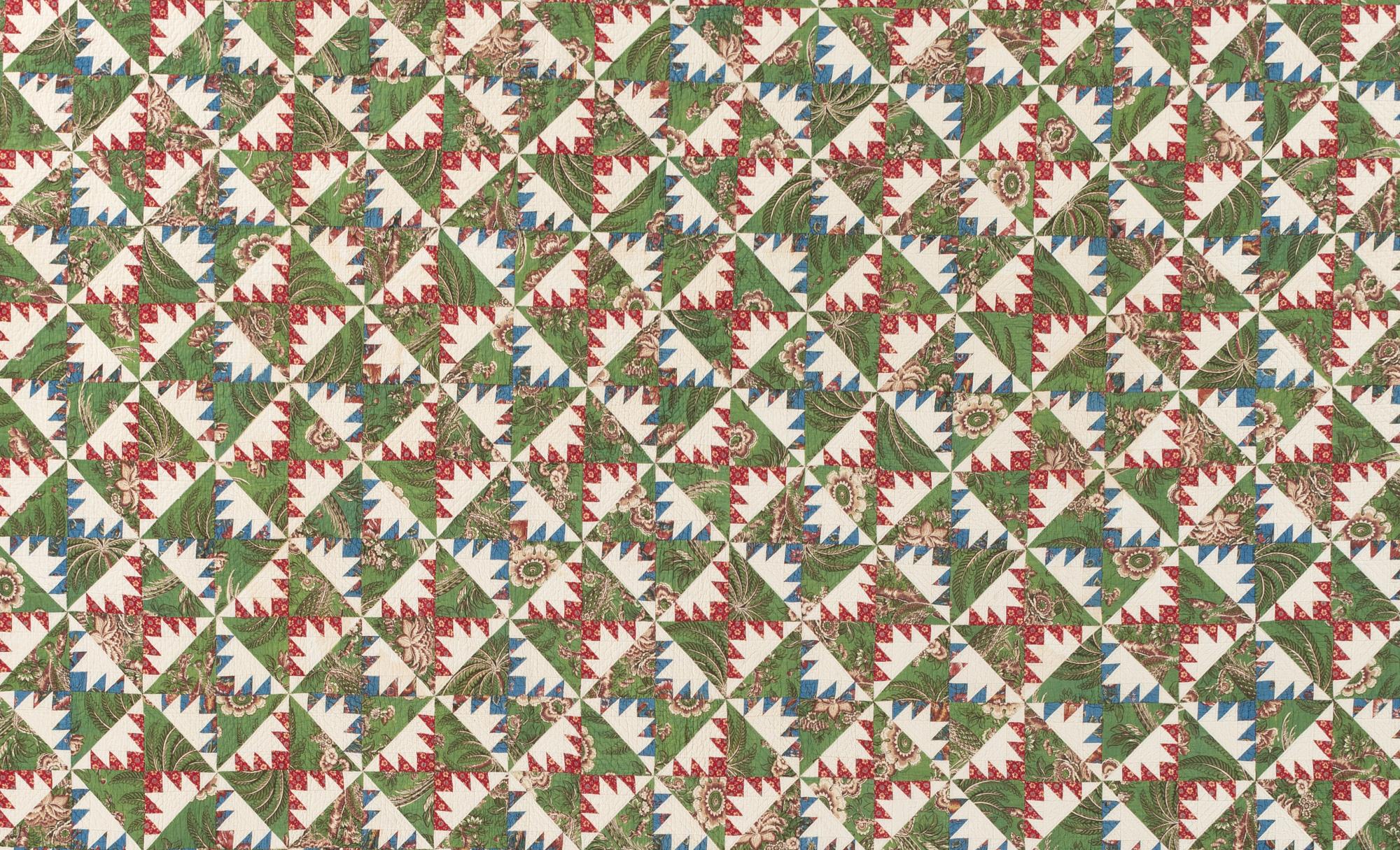
Block by Block
August 4-November 30, 2017
American Quilts in the Industrial Age

In the 1820s and 1830s, American quilts were increasingly made from pieced blocks—generally squares made up of smaller squares or triangles. American quiltmakers introduced the practice of alternating pieced blocks with un-pieced blocks made of a solid color or a single print, and set these elements straight (perpendicular to the edges of the quilt) or “on-point” (at 45° angles). Blocks were then attached to each other, or to strips of fabric called “sashing.” Unlike earlier quilts, which often featured multiple borders, block-style quilts generally had single borders or none at all. By the mid-1800s, the repetition and grid-like arrangement of similar blocks became the predominant format for American-made quilts.
As industrial manufacturing processes revolutionized everyday life, the American textile industry boomed. By the mid-1830s, factories in New England employed thousands of women and produced cloth in a great variety of colors. Cotton print fabric, now inexpensive and widely available, became the plentiful raw material of American patchwork, enabling quiltmakers to focus on color, geometry, and the interaction between them. Expanded educational opportunities for women—both formal and informal—contributed to their knowledge of mathematics, and to the development of block-style designs.
Block by Block is drawn from scholar Janice Frisch’s research for American Quilts in the Industrial Age, 1760-1870. Frisch suggests that the rise of block-style quilts mirrored the shift to the standardized, interchangeable parts that characterized industrial processes. The new, comprehensive catalog of the IQM Collection, edited by Patricia Crews and Carolyn Ducey, highlights the skillful needlework and dazzling designs of America’s material culture. The book will be available in February 2018.